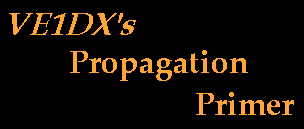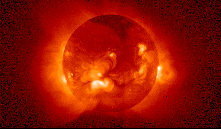



![]()
Predicting the Impact of Solar Flares Most amateurs are aware of the solar terrestrial indices that are broadcast by radio station WWV at 18 minutes past each hour. Following these numbers, there is a prediction of solar and geomagnetic activity for the next 24 hours. Most of us, at one time or another, have listened to the computerized voice at 10, 15 or 20 MHz say something like "Solar terrestrial indices for 16 March: The solar flux was 169 and the K index was 10 . . . the estimated Boulder A index at 18:18 UTC was 3 . . . conditions for the next 24 hours follow: The solar flux will be low. The geomagnetic field will be quiet to unsettled . . ."
Major Geomagnetic Storms Anyone who watches Star Trek has no doubt heard Mr. Spock inform Captain Kirk that either communications are out or the transporter is inoperable due to a magnetic storm. In the science fiction world of the starship Enterprise, this is usually dramatized on the main viewscreen by distorted audio and video fading in and out. Crewmembers are often stranded on the surface of some remote planet and Scotty can't beam them up without scattering their molecules throughout the universe. . .
The Northern Lights & Six Meters An aurora is a phenomenon usually observed as a glow coming from the upper atmosphere in the polar latitudes. We often refer to auroral activity as the Northern Lights (aurora borealis) in the Northern Hemisphere or the Southern Lights (aurora australis) in the Southern Hemisphere. Auroras occur most often around the equinoxes (March-April and September-October). . .
Seasonal Propagation It is well known HF radio propagation is affected by many factors. The most well known is the 11-year solar cycle. As sunspots increase and decrease over this period, so does propagation. Coronal mass ejections, the result of solar flares, prominences and coronal holes, have short-term dramatic affects and are less predictable. They induce geomagnetic storms that often attenuate signals for days. Those concerned with HF communication are very familiar with the solar cycle and geomagnetic activity. . .
![]()

